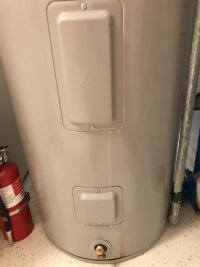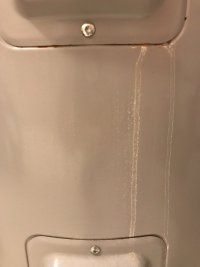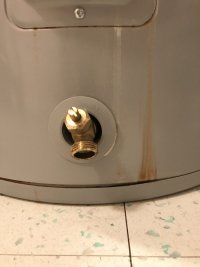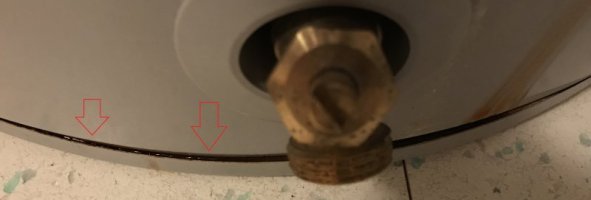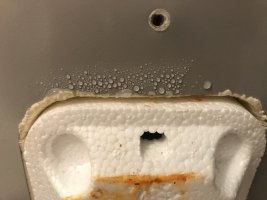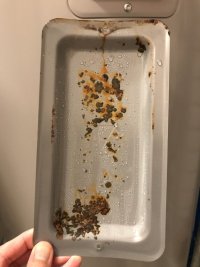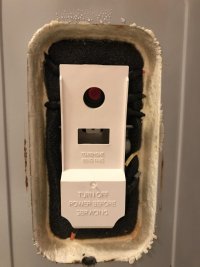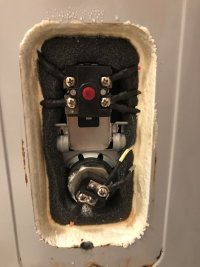Hello all,
I have a 7-year-old GE Geospring hybrid water heater that has recently acquired some rusty looking streaks on the exterior of the tank. The bottom/pan of the tank appears to have bulged a bit away and I can see some wetness in there. I have indicated that area with red arrows in the last photo.
Can anyone help me diagnose what the problem is and what I should do about it? It apparently has a 10-year manufacturer's warranty for parts.
I must admit I have not inspected the anode rod, although this has been on my to-do list for some time. I do have an expansion tank installed as well as a water pressure gauge that consistently reads about 50 PSI. I've never actually used the conductive heating elements - it has always been used in heat pump mode. I last drained the tank about 2 years ago and there was very little sediment.
Thanks for any help!
I have a 7-year-old GE Geospring hybrid water heater that has recently acquired some rusty looking streaks on the exterior of the tank. The bottom/pan of the tank appears to have bulged a bit away and I can see some wetness in there. I have indicated that area with red arrows in the last photo.
Can anyone help me diagnose what the problem is and what I should do about it? It apparently has a 10-year manufacturer's warranty for parts.
I must admit I have not inspected the anode rod, although this has been on my to-do list for some time. I do have an expansion tank installed as well as a water pressure gauge that consistently reads about 50 PSI. I've never actually used the conductive heating elements - it has always been used in heat pump mode. I last drained the tank about 2 years ago and there was very little sediment.
Thanks for any help!

